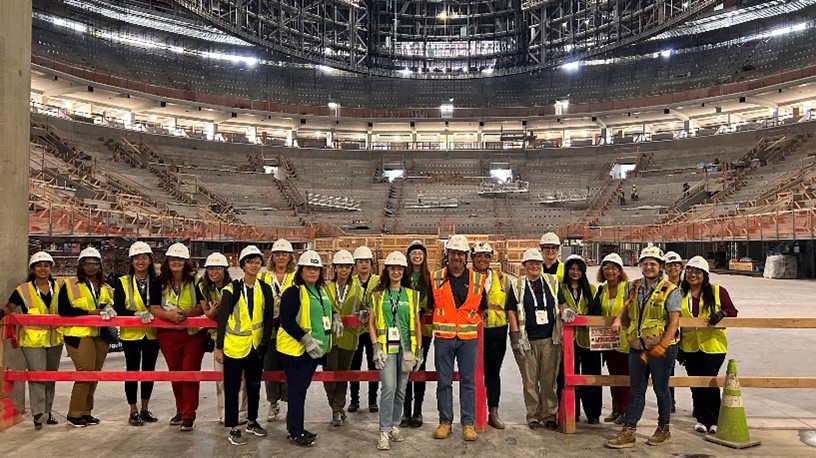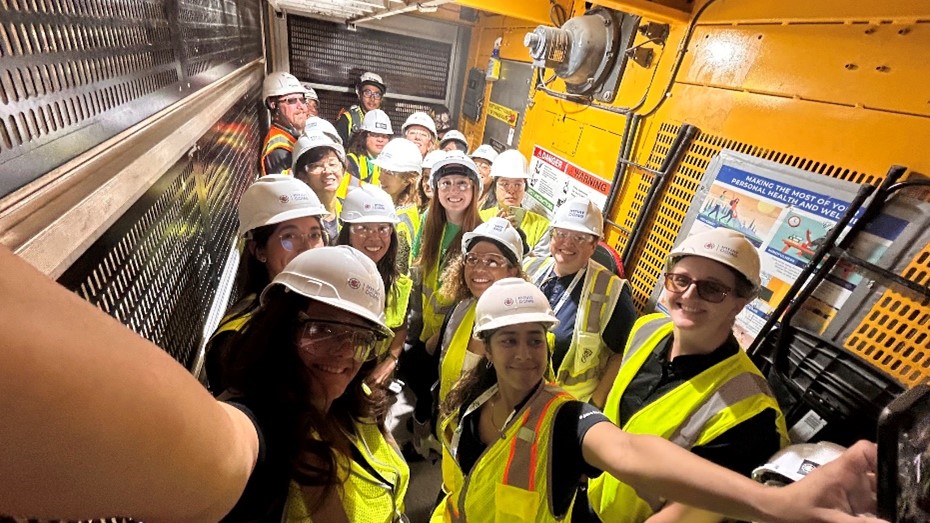Delivering on Decarbonization: Meet Victoria Watson
In this Decarbonization and Climate Resilience blog series, we’re highlighting our portfolio decarbonization and sustainability experts and how they are supporting our clients to reach their net zero goals.
Victoria Watson leads AECOM’s High-Performance Buildings team in California, overseeing sustainability consulting, high-performance and net zero building design, and energy simulation. With over 17 years’ experience working in both North America and Europe, she has spearheaded numerous net zero energy projects. Victoria partners with clients to realize their net-zero ambitions such as LEED Platinum, carbon neutrality, and resilience.
Tell us a bit about yourself – your role and career journey.
My journey into sustainability engineering was unexpected—I initially planned to attend medical school but soon realized my true career path lay elsewhere.
I didn’t realize it at the time but a key moment that led me to choose a career in engineering came when I was at high school and I heard a female engineer speak about her career. Her experiences of travel and innovation sparked my interest in engineering, though my real passion for it developed gradually over time. While studying engineering at the University of Manchester, I secured a six-month internship in AECOM’s Advanced Design Group where I worked on performance-based design, renewable energy, and sustainability. This led to AECOM sponsoring my last year of study and offering me a full-time position after graduation. That was 17 years ago!
My desire to grow led me to seek new opportunities and, through a timely connection, transitioned to AECOM’s High-Performance Buildings team in Orange County, California, moving to the U.S. in 2013, where I now live with my husband and two children Noah and Sophie. Initially, I faced challenges adapting, but over the past decade, I’ve embraced them, growing into my current role as co-lead of AECOM’s High-Performance Buildings and Communities Team in U.S. West. Along the way, I’ve had the privilege of collaborating with remarkable individuals on transformative projects, further solidifying my passion for sustainability engineering.
A pivotal moment came in high school when I heard a female engineer speak about her career. Her experiences of travel and innovation sparked my interest in engineering.
Talk to us about a sustainable design or high-performance building project that has impacted or been a major highlight of your career. How is it solving the challenges and issues our clients and communities are facing today?
So many exciting projects come to mind, but one that stands out is the Intuit Dome, the new home of the LA Clippers located in Inglewood, California. I led the high-performance and sustainable design analytics for this incredible new NBA arena. Venues like Intuit Dome present invaluable opportunities for honing new skills and pioneering innovative processes. A significant challenge faced by our clients today is the imperative to decarbonize their assets and operations. In response, the Intuit Dome is not merely aiming for excellence; it has set a new standard as the first LEED v4/4.1 Building Design and Construction (BD+C): New Construction (NC) sports arena in the world.
Notably, its 2-megawatt solar panel array and 11-megawatt hour battery storage system underscores not only the arena’s and client’s commitment to sustainability but also ensures resilience and reliability in its energy infrastructure. Moreover, the vision for Intuit Dome wasn’t just focused on environmental impact during its design phase; it was equally dedicated to sustainable operations, leveraging their zero-waste room to sort and reduce waste from events.
Being part of this endeavor has been immensely fulfilling, emphasizing the significance of sustainability in our work and local impact.
A significant challenge faced by our clients today is the imperative to decarbonize their assets and operations. In response, Intuit Dome was not merely aiming for excellence; but has set a new standard as the first LEED v4/4.1 Building Design and Construction (BD+C): New Construction (NC) sports arena in the world.
What are some key design principles that you take into consideration when creating sustainable, high-performance buildings?
The ethos behind high performance building design champions a collaborative, process-driven approach aimed at crystallizing a project’s vision and establishing tangible performance benchmarks. Our role involves translating our clients’ definition of what performance means for a project into a performance-based approach leveraging our multidisciplinary integrated teams to track and meet performance goals.
In recent years, there’s been a notable pivot from energy efficiency towards addressing greenhouse gas (GHG) emissions and carbon footprint comprehensively. This includes scrutinizing embodied and operational carbon, integrating renewable energy solutions, and exploring avenues for carbon offsetting.
Looking ahead, I anticipate a heightened emphasis on waste management, occupant well-being, resilience, and optimizing building controls. It’s imperative to recognize that we’re not designing for today alone; we’re shaping the built environment for future generations. As such, we must continue to evolve our approach to meet the ever-changing needs and priorities of tomorrow.
As the global lead for AECOM’s High Performance Buildings Technical Practice Group (TPG), I am very fortunate to work with amazing colleagues who remain committed to delving deeper into these critical areas, driving innovation, and staying at the forefront of sustainable building design.
In recent years, there’s been a notable pivot from energy efficiency towards addressing greenhouse gas (GHG) emissions and carbon footprint comprehensively. This includes scrutinizing embodied and operational carbon, integrating renewable energy solutions, and exploring avenues for carbon offsetting.
The US and California in particular is facing a host of environmental issues, such as wildfires, flooding, earthquakes, and extreme heat. How are we embedding resilience into our designs and engineering to mitigate the impact of these issues? Can you give any examples?
Resilience encompasses the capacity to prepare for, withstand, recover from, and adapt to adverse circumstances successfully. In our approach to design and engineering, we view resilience through the lens of encouraging resilient communities. For example, we recently completed Integrated Energy Resource Plans for three campuses within the Los Angeles Community College District (LACCD), the largest community college system in the United States, catering to over 80 percent of students from underserved populations.
Central to these plans is the concept of a microgrid, leveraging innovative infrastructure that integrates renewable energy sources and battery energy storage systems to enable continuous operation of critical campus facilities, even in the face of extreme conditions or utility blackouts. For instance, during heatwaves or power outages, designated areas of the campus can function as cooling centers, providing essential relief to the community.
By prioritizing resilience in our designs and engineering solutions, we not only fortify the physical infrastructure of campuses but also strengthen the social fabric of the communities they serve, ensuring their ability to withstand and thrive in the face of adversity.
We leverage innovative infrastructure that integrates renewable energy sources and battery energy storage systems to enable continuous operation of critical campus facilities, even in the face of extreme conditions or utility blackouts.









